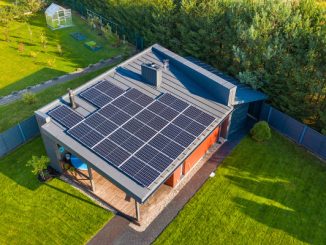
Going into the new year, the Gujarat government announced its new solar policy, outlining its vision for the next five years. The policy emphasises the need to involve small-scale consumers in adopting solar power by introducing a slew of incentives. Under the new policy, the government has eliminated the limit on the sanctioned capacity for projects, which reflects its intent to widen the scope and increase the pace of solar power adoption in the state.
No ceiling on capacity
The highlight of the policy is that residential, commercial and industrial consumers, as well as third-party projects, will be eligible to sell power to state discoms. Residential consumers are encouraged to set up rooftop projects for self-consumption without any limit on the sanctioned capacity. They can also set up rooftop projects for third-party sale through lease or power purchase agreements. If a consumer generates surplus electricity, he will be able to sell it to the respective discoms at Rs 2.25 per unit for the first five years and subsequently at 75 per cent of the lowest price discovered at auctions conducted by Gujarat Urja Vikas Nigam Limited (GUVNL) for non-park-based solar projects in the preceding six months. To further incentivise rooftop solar adoption among residents, no transmission and wheeling, or banking charges will be applicable. Cross-subsidies have also been removed for self-consumption; these will be charged under third-party sale.
Capacity restrictions have been removed for captive solar power projects for industrial, commercial and institutional consumers. For high tension captive power users, electricity will be supplied between 7 a.m. and 6 p.m., and usage will be accounted for daily. For low tension captive power users, electricity will be supplied during the same time window but will be accounted for based on billing cycles. The excess power for both users will be purchased by the discom at 75 per cent of the simple average of tariffs discovered in GUVNL auctions in the preceding six months. Cross-subsidies and additional surcharges will be exempt while transmission and wheeling charges, and banking charges will be applicable. Capacity restrictions have also been removed for solar projects that are developed to fulfil the discom’s renewable purchase obligations. Energy accounting will be carried out on a 15-minute time block basis and surplus power will be purchased on the same terms as captive solar projects. Banking charges will be exempted and cross-subsidy charges will be waived for captive projects. For solar power projects under the renewable energy certificate mechanism, capacity will be restricted to the sanctioned load or contract demand.
Advantage MSMEs
In addition to residential consumers, micro, small, and medium enterprises (MSMEs) have been offered several incentives to set up projects for self-consumption or even third-party sale. For captive projects, MSME manufacturing units will be eligible to sell surplus power to the respective discoms on the same terms as residential consumers for the first five years. Thereafter, the surplus power will be sold at the same tariff as other captive solar projects. For both captive and third-party sale contracts, the banking charges for MSMEs will be Rs 1.10 per unit, Re 0.4 less than the unit charge for demand-based consumers. Among other announcements, the security deposit owed by developers to discoms has been reduced from Rs 2.5 million per MW to Rs 0.5 million per MW. Further, small-scale projects of less than 4 MW will be able to sell power to discoms at a price of Re 0.4 higher than the originally discovered tariff.
Future outlook
Prior to the current policy, developers had to find a contracted demand equivalent to 50 per cent of the planned capacity, which caused several delays. This issue was aggravated during the pandemic. The new policy will resolve this issue to some extent. In case of surplus electricity generation by residential and MSME consumers, the state promises to purchase it at a tariff of Rs 2.25 per unit. This, however, eliminates the possibility of net metering, which was an attraction for smaller enterprises.
Gujarat’s new solar policy reflects the state government’s intent to promote the adoption of solar energy across residential households as well as medium and small enterprises. With India far from meeting its 2022 rooftop solar capacity target, Gujarat’s progress has been remarkable and the current policy is only expected to increase the pace of solar adoption. Gujarat, with a capacity of 3.6 GW, has the third largest solar capacity among states, according to the state’s energy development agency. With the new solar policy, it has given more freedom to power producers and has encouraged MSMEs and residential consumers alike to make the switch to solar power.



